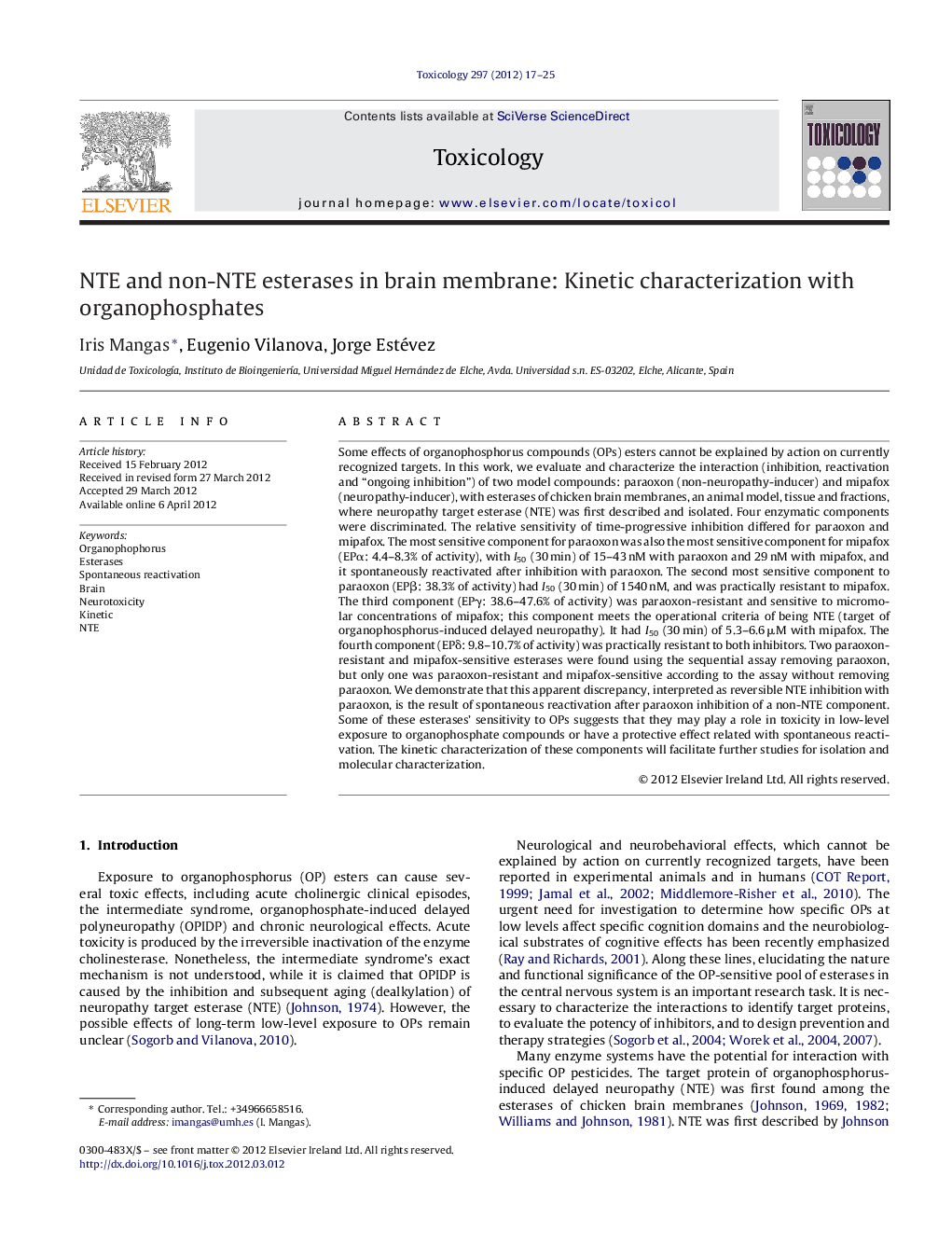| Article ID | Journal | Published Year | Pages | File Type |
|---|---|---|---|---|
| 2595921 | Toxicology | 2012 | 9 Pages |
Some effects of organophosphorus compounds (OPs) esters cannot be explained by action on currently recognized targets. In this work, we evaluate and characterize the interaction (inhibition, reactivation and “ongoing inhibition”) of two model compounds: paraoxon (non-neuropathy-inducer) and mipafox (neuropathy-inducer), with esterases of chicken brain membranes, an animal model, tissue and fractions, where neuropathy target esterase (NTE) was first described and isolated. Four enzymatic components were discriminated. The relative sensitivity of time-progressive inhibition differed for paraoxon and mipafox. The most sensitive component for paraoxon was also the most sensitive component for mipafox (EPα: 4.4–8.3% of activity), with I50 (30 min) of 15–43 nM with paraoxon and 29 nM with mipafox, and it spontaneously reactivated after inhibition with paraoxon. The second most sensitive component to paraoxon (EPβ: 38.3% of activity) had I50 (30 min) of 1540 nM, and was practically resistant to mipafox. The third component (EPγ: 38.6–47.6% of activity) was paraoxon-resistant and sensitive to micromolar concentrations of mipafox; this component meets the operational criteria of being NTE (target of organophosphorus-induced delayed neuropathy). It had I50 (30
